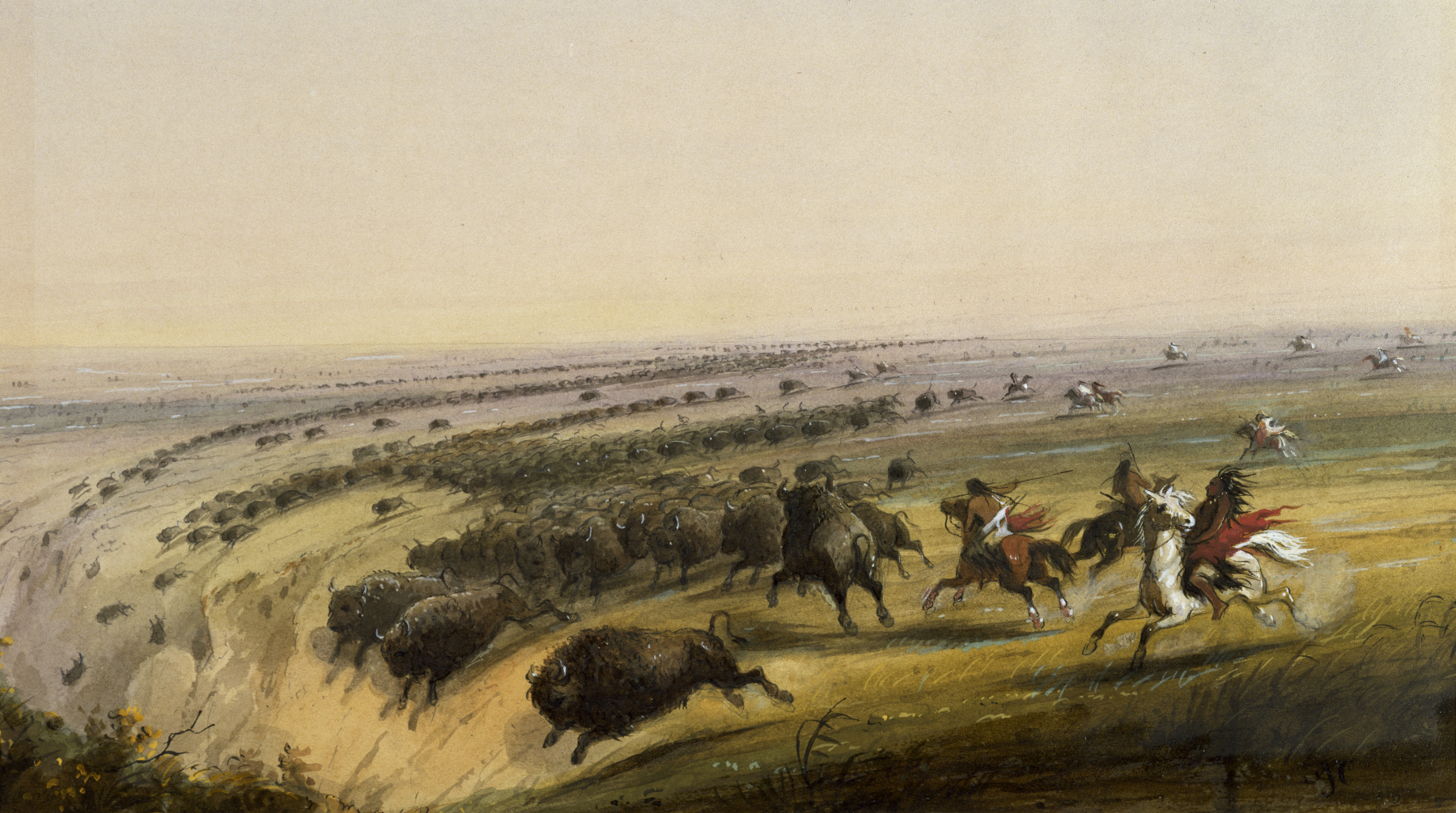Cool Facts About Bison
- Males are called "bulls", and females are called "cows". Bulls can weigh over 2,000 pounds, making them the largest land mammals in North America.
- The direct ancestor of the modern-day bison lived 400,000 years ago, and had horns like measured 9 feet from tip to tip! (Today's bison horns are 2 feet.)
- "Bison bison" is their scientific name, and "bison" is the correct common name. The term "buffalo", however, is widely used and accepted.
- You can tell their mood by their tails. When their tails are raised straight up, it indicated their intention to charge.
- There are two variants: the wood bison and the plains bison.
- They can run up to 40 miles per hour and jump 6 feet!
- Just like us humans, they can be 6 feet tall, and they have a 9-month pregnancy. But unlike us, their babies weigh 30 pounds.
- Bison help the soil. They graze on grass, turning up the soil with their hooves and fertlizing it with their feces. This gave farmers fertile land, once agriculture arrived to the Great Plains.
- Bison also help other animals. They are food for wolves, and many scavengers eat their massive carcasses. Prairie dogs also prefer to live in areas where bison graze in order to see predators easier in the short grass.
Their Roots Run Deep
Native Americans have lived with the bison for many decades. In ceremonial bison drives, they would run a whole herd over a cliff to their deaths. This large hunt provided necessary supplies for harsh winters. Sometimes, hunters surrounded a herd, tightly packing them together and allowing archers a better shot. When Europeans came in the 1500's with horses, some Native Americans became nomadic, following bison herds on horseback. Native Americans were not a problem for the bison population. Although they hunted many, large herds could sustain themselves, and the tribes were frugal, using everything from the animals. They ate the bison meat, used the skin for clothing, and made tools from their bones and horns. Bison also served as a spiritual animal for the tribes that prospered from them.
Genocide on the Great Plains
In the late 1800's, the expansion of the railroad into the Great Plains promoted the slaughter of the bison in more ways than one. Killing bison meant to clear the way for railroad tracks, and also to feed workers laying them. Commercial hunters shipped 1.5 million carcasses east to be sold for their meat and hides. In fact, that's how William Cody got the iconic nickname "Buffalo Bill"- he massacred 4,000 in just 2 years. In the 1870's, the elastic leather drive belts used in mills, which was made from bison hides, was in great demand. Because they were seen as pests, bison were shot for entertainment- some trains allowed passengers to shoot from their windows. There were even bison-killing contests. On a more cynical note, the slaughter was a means of easily moving Native Americans to reservations, as the loss of this beautiful animal disheartened many tribes. An estimated 30 to 200 million bison once roamed the plains from Mexico up to Canada, from the Rocky Mountains to the Mississippi River. By 1890, only 1,000 remained.
Saving the Species
In 1894, the first federal legislation protecting these animals was enacted. Killing of bison was punishable by a $1000.00 fine or imprisonment. In 1905, the American Bison Society was founded in New York by wealthy aristrocrats, including Andrew Carnegie and Theodore Roosevelt. In 1907, they sent 15 bison from the Bronx Zoo in New York, by train, out to a reserve in Oklahoma. Today, there are approximately 500,000 bison in North America. Yellowstone National Park is home to 5,000 free-roaming bison but most bison are the property of private ranchers, raised for their meat. (55,000 bison belong to Ted Turner alone, the founder of CNN.)
The Big Picture
I started off this blog saying bison are big. But what about even bigger things? What is in store for these animals, and many like it, in the future? There's no doubt that this attention brought to the bison will help shed light to the conservation of many American animals. When many people think about conservation, they envision habitat destruction in the Amazon rain forest, or poaching in Africa. But what this new symbol will- hopefully- promote is conservation right here at home.
Want more info? Check out Defenders of Wildlife, National Geographic, the New Yorker, and the National Wildlife Federation. As always, thanks for reading everyone!








